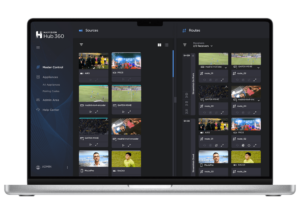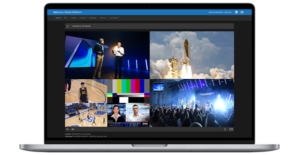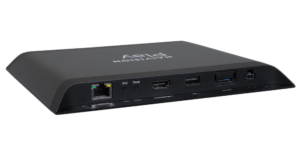Why You Should Be Excited About the SRT Protocol Technical Overview
Haivision recently launched the SRT Protocol Technical Overview. This is a major step forward for SRT and the future of the open source protocol. It is also exciting news for both seasoned SRT users and for those in the video streaming world who have yet to take the plunge.
Want to know what all the fuss is about? Keep reading to discover what this overview is, and why you should care.
Wait a second, what is SRT?
SRT (Secure Reliable Transport) is an open-source video streaming protocol developed by Haivision. It allows users to deliver high-quality, low-latency video streams across the public internet and to optimize video streaming performance across unpredictable networks.
What it is
The SRT Protocol Technical Overview was created to assist people in understanding, implementing, and troubleshooting the protocol. It details all aspects of SRT including its origins, packet structures, the sender and receiver operations, packet loss recovery techniques, handshaking mechanisms, timing and latency, and encryption. The overview also includes a sample implementation, which is particularly valuable for newer users.
The technical overview is more than a simple instruction manual. Through its 89 pages, the overview gives users an in-depth look at the background of SRT and its development. Readers will not only understand how the SRT protocol operates, but why it operates the way it does, which can help lead the path to the next steps for the protocol.
Why you should read it
The SRT Protocol Technical Overview will enable users to ensure that they enjoy the full benefits of video streaming with SRT. New users will be able to enjoy the wisdom gathered from the experience of early adopters, and will also benefit from the sample implementation outlined in the overview. However, even the most seasoned users of SRT will benefit, as they dive into the technical aspects of the protocol. Of particular interest, for many users, is a short, but solid discussion near the beginning of the document on the UDT protocol supporting ARQ.
This additional knowledge will not only help users with their current implementations of SRT, but will also allow users to help with the evolution of the video streaming protocol, including standardization. This is a living document, and comments will help the team to update the overview, ensuring that its information is always up to date and user-relevant.
Why Haivision launched it
Haivision is the original developer of the SRT protocol. We are so proud of the evolution of the technology, and we have always known that it was something special. The first open sourced implementation of SRT came only three hours after we made the protocol available as open source in April 2017. Since then, over 170 companies have began the process of implementing the technology, with over 60 having creating SRT Ready products –featuring SRT as an option for video transport. Over 150 companies have also joined the SRT Alliance – composed of companies promoting SRT as a standard for low-latency internet streaming, including some very large names, such as Microsoft.
As the creators of SRT, we have a vested interest in its growth. And as SRT continues to be adopted at such a rapid pace, we wanted to ensure that users had an authoritative guide they could turn to at the beginning, as well as being able to work with the community of SRT users in the public forum. This technical overview is our way of not only providing current, new, and potential users with the right information on the protocol, but it is a step towards our pursuit of SRT as a standard, as the request for comments has already become a public discussion online.
What is next?
As mentioned earlier in this post, the SRT Protocol Technical Overview is a living document. We invite all readers to leave their comments, questions, and suggestions in the discussion so that this document can continue to be updated and improved. The overview will be updated frequently, so we invite those interested in SRT to check back often for new updates.
Further, as also mentioned above, this overview marks the beginning of the journey towards creating a new standard. The request for comments has already begun in the open source public forum, and will continue as more users contribute to this exciting open source video streaming protocol.
With all of this in mind, I would highly suggest that you download the SRT Protocol Technical Overview and take a look and learn more about the protocol, its background, and its applications. You can download the SRT Protocol Technical Overview by following this link.
























